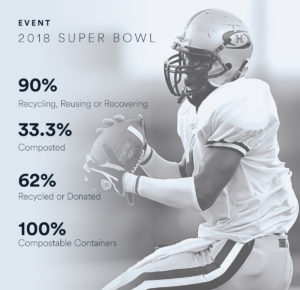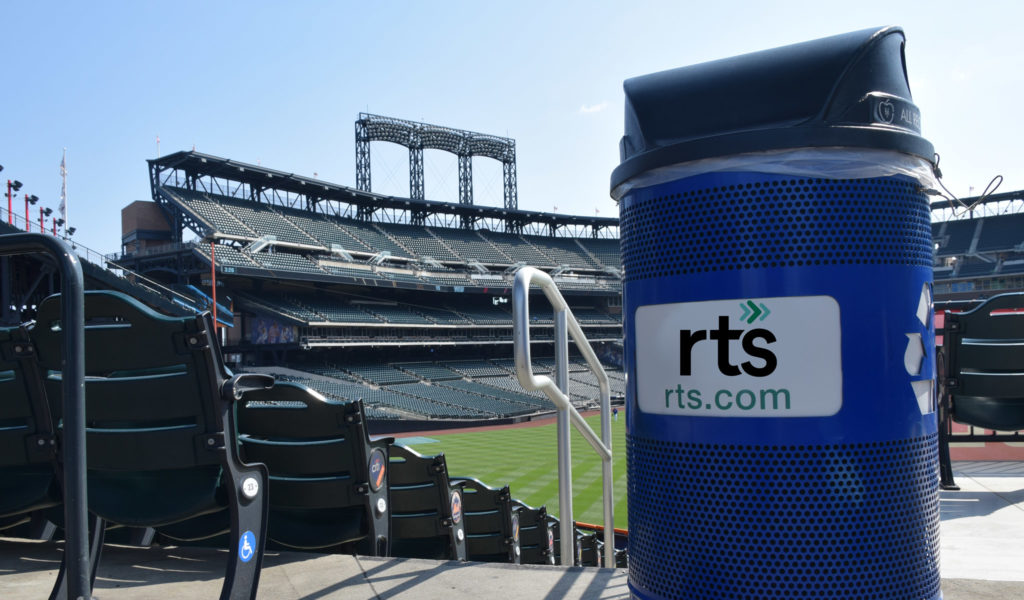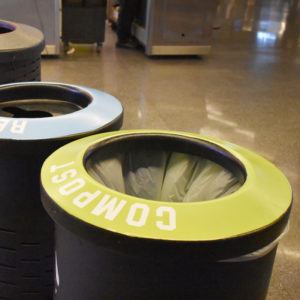Sport is a huge part of life both in the US and across the world. According to the Bureau of Labor Statistics, 19.3% of the US population was engaged in sports and exercise during 2019—that’s around 66 million people each day. However, it’s not just engaging in physical activities get us going, as watching sports both live and on TV are also hugely popular pastimes.
 In fact, the North American sports market generated $71.1 billion in 2018, and is predicted to grow 3.2% annually, reaching $83.1 billion by 2023. Additionally, 150 million people attended sporting events in person in 2018, and these numbers look set to recover following restrictions put in place during the pandemic. These figures included 70 million people attending baseball games, 34 million sitting down to the football, and just over 20 million each for NBA and NHL games.
In fact, the North American sports market generated $71.1 billion in 2018, and is predicted to grow 3.2% annually, reaching $83.1 billion by 2023. Additionally, 150 million people attended sporting events in person in 2018, and these numbers look set to recover following restrictions put in place during the pandemic. These figures included 70 million people attending baseball games, 34 million sitting down to the football, and just over 20 million each for NBA and NHL games.
All of which means that a recent trend for promoting sustainability at sporting events has the potential to deliver a huge impact sports fans–and not only in the US. Around the globe, from Premier League soccer in the UK to cricket in Australia and major global one-off sporting tournaments such as the FIFA World Cup, organizers are choosing a more sustainable approach and attempting to spread awareness.
So, just what is the live sporting event industry doing to reduce its impact and enhance its sustainability practice? Let’s take a closer look at some key major events.
Sustainable Sports Events: Key Examples
Sporting events can have large carbon footprints. It’s estimated that fans traveling to just one Champions League soccer match in Europe will generate nearly 5,600 tons of CO2. So it has become imperative that both domestic and international sporting events do all they can to tackle this level of impact.
Leading the way was the Olympic Games in Tokyo. The 2020 organizing committee introduced a number of innovative measures to minimize the Games’ impact. Under the heading ‘be better, together’ they set out to make it the most sustainable Olympics ever.
 This included efforts such as building the athletes’ village out of sustainable and locally sourced wood and using alternative fuel sources for all vehicles. Additionally, all water used at the games was either rainwater or recycled (apart from drinking water). The Paris 2024 Games has also set itself the target of being the next ‘Greenest Games ever’.
This included efforts such as building the athletes’ village out of sustainable and locally sourced wood and using alternative fuel sources for all vehicles. Additionally, all water used at the games was either rainwater or recycled (apart from drinking water). The Paris 2024 Games has also set itself the target of being the next ‘Greenest Games ever’.
Closer to home, the 2018 Super Bowl, the pinnacle of the NFL sporting season, aimed to go zero waste for the first time. The event was achieved an impressive 90% for recycling, reusing or recovering the waste generated, with just under a third composted and the remaining 62% recycled or donated. All food served to fans at the stadium came in fully compostable containers and any food waste that could not be composted was used to generate steam power to heat buildings in downtown Minneapolis.
However, aiming for a more sustainable sporting event is not always easy. Sports events by their nature involve a lot of people travelling to arenas and then occupying the same space, which can make limiting carbon footprints and dealing with waste difficult. So, let’s look at the key areas of making any event more sustainable.
How to Target Sustainability at Sporting Events
There are three key ways that sporting events can target improved sustainability.
 Travel and transport
Travel and transport
About 85% of the emissions produced by a major sporting event come as a direct result of travel and accommodation of guests. In the case of the 2018 Football World Cup, that resulted in the same amount of electricity used by half a million homes over the course of a year. But how to reduce this number? Fans need to travel to sporting events.
Carbon offsetting is one way of tackling the problem as is creating low carbon development projects in host destinations.
Food and drink
Fans at sporting events need to be fed and watered, which can produce a huge amount of waste. During the 2016 Rio Olympic Games, an estimated 14 million meals were served producing 180,000 tons of CO2.
Organizers can choose to work with sustainable local providers, which has a positive impact across the board. For example, the Paris Olympic Games in 2024 have pledged to use 100% sustainable and certified food sources throughout the competition.
Efforts such as those employed during the recent Super Bowl can also help. A huge amount of waste is generated that could be used for compost or to supply alternative energy sources.
Infrastructure
Host cities for major sporting events are often required to provide a raft of high-level facilities, including stadia and event spaces, as well as training facilities, accommodation and more. These projects are often used to regenerate areas of cities and secure funding for other projects.
However, they should also be achieved in the most sustainable way possible. For recent Olympics and World Cups, these projects have tended to grow in size and scope with each tournament but there finally seems to have been a change in how events are being run.
Qatar has invested a colossal $100 billion on infrastructure ahead of the World Cup in 2022. This makes it the most expensive to date by some margin. However, they have also pledged to make it the first carbon neutral event. Strict standards in design and construction have made the event more sustainable.
Other examples of sustainable design include Amsterdam’s Johan Cruyff Arena, which hosted the 2019 Champions League final, which is powered by more than 4,000 solar panels on its roof.
A Case Study in Event Sustainability
The Barclay’s Center, a premier NBA stadium in Brooklyn, was looking at alternative ways of dealing with its waste in an effort to boost its sustainability commitments. The stadium generated a large amount of recyclable material but did not have the capacity or infrastructure to effectively deal with all this waste. As a consequence, potentially recyclable material was being rejected at facilities and ending up in landfill, costing both the environment and the stadium’s management company. They partnered with our team here at RTS to come up with a solution.
This included splitting waste compactors into multiple streams so that it could be quickly and easily loaded onto trucks and taken to the correct recycling facility. RTS also employed a comprehensive recycling and training program back of house, with additional signage helping the separation of waste at source. Over time, the amount of waste being removed and recycled improved.
More than 1,000 tons of cardboard, metal and plastic waste was diverted from landfills annually and an additional 650 tons of organic waste was composted. This achieved monthly cost savings of almost $20,000 over a 12-month period for the client.
How Sport Can Lead the Way
The governing bodies that run both international and domestic sport have not always been willing or able to make use of their unique position of power and influence. But it seems like the tables are slowly turning. With events like the Super Bowl, Olympics and World Cup aiming to move in a more sustainable direction, it finally seems like sport is using its power to affect change. With global audiences in the billions and fans in the stadiums totaling tens of millions each year it is not just the immediate impact of sustainable practice but the power to act as a catalyst for wider change that is truly exciting.
Events and organizations on a smaller scale do not always find it easy to action the changes they need to be more sustainable in how they operate. Which is where we come in at RTS. We can work with both public and private enterprises looking for either sustainable waste solutions or simply a way to do waste better.




